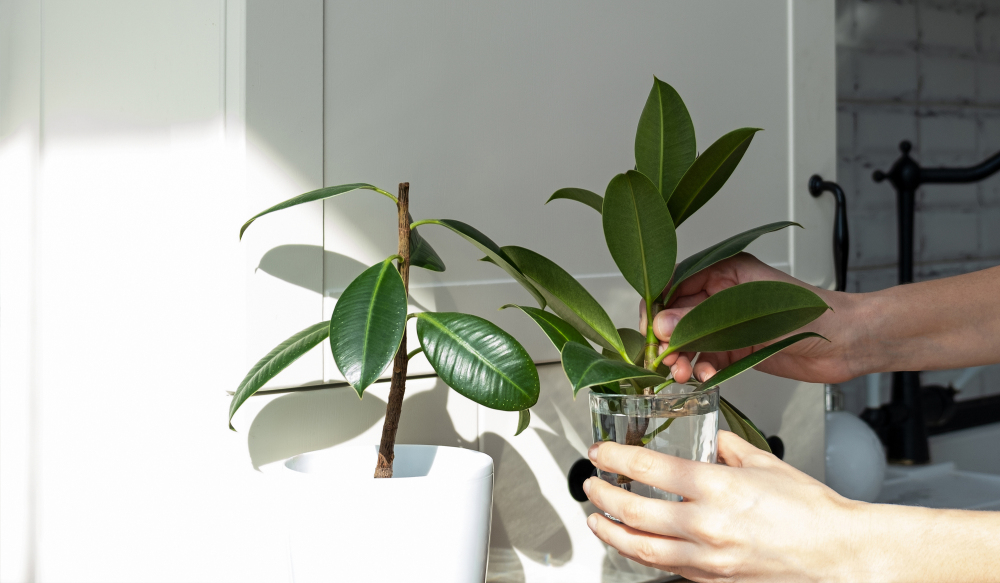
Are you desiring additional plants but lack the funds to buy them? Are you searching for a method to prune your plant and create more plants using cuttings? The process of propagation can provide a solution to your dilemmas!
What is Propagation?
Creating new plants from various sources, such as stem cuttings and root division, is known as propagation. Different techniques may be employed depending on the type of plant being propagated, with the aim of achieving the best possible result.
This article will focus on the most common (and easiest) ways to expand your plant collection through propagation. Propagation takes some time and practice, so don’t be afraid to experience some trial and error before getting the hang of this technique.
Different propagation techniques are used to multiply houseplants, depending on the type of plant. These techniques can range from rooting a leaf to taking a stem cutting to water propagation. No matter which method you choose, the result will be rewarding, and you can even give clones of your plant as gifts to bring some extra greenery indoors.
Below are the most common ways to propagate a plant.
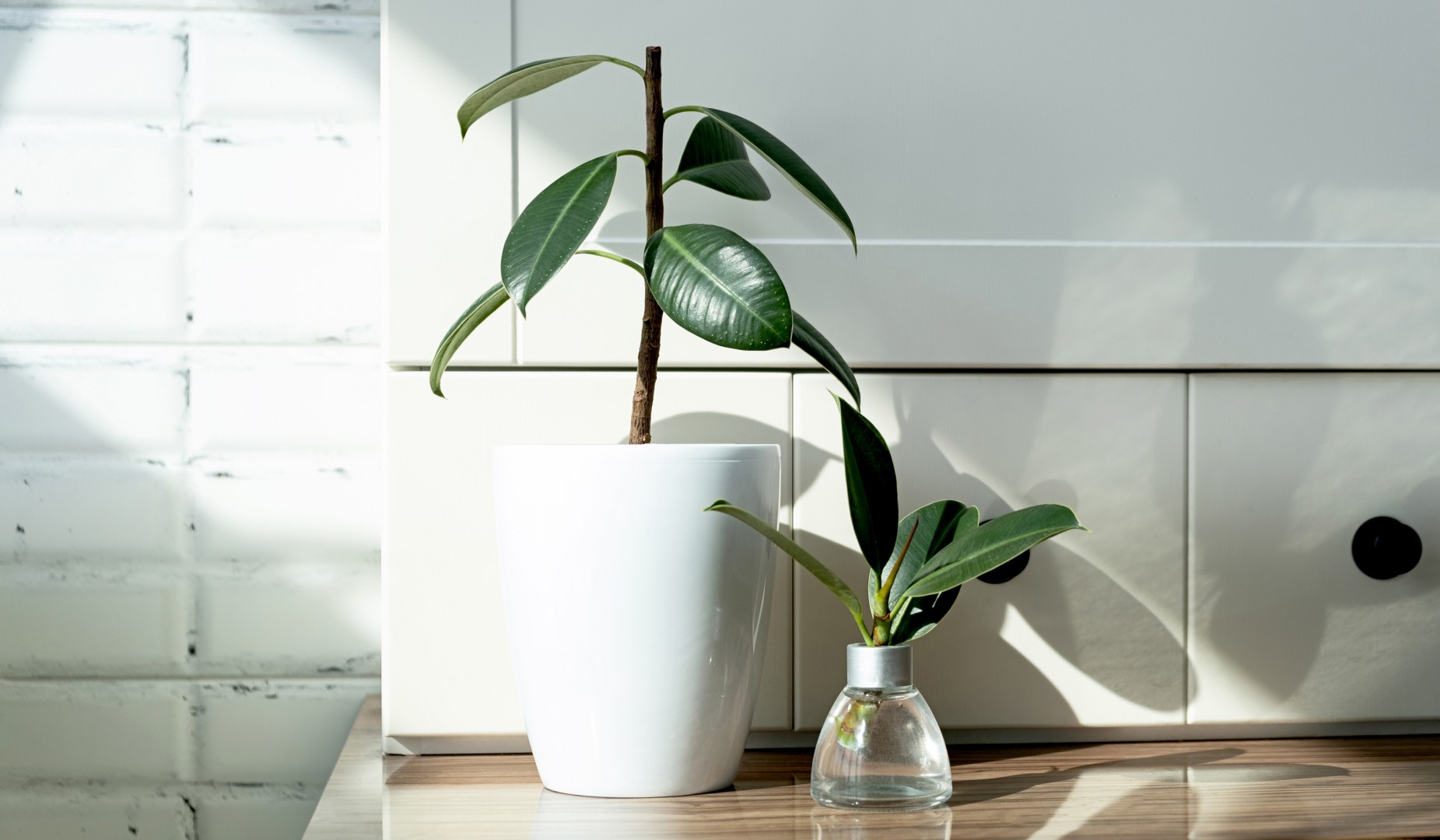
Short form Summary: Place your new cutting into a jar (preferably a glass jar) filled with cool/tepid water and wait until you notice white roots appearing. When the roots reach around a half-inch long, remove them from the water and plant them in fresh moist potting soil.
If you wait too long, the roots will not acclimate to the soil properly because they will become dependent on living in the water. Once your cutting is established, monitor and care for your plant until it forms a strong root system.
Long Form – Step by Step:
What you’ll need:
1. A Healthy Plant to propagate
2. Scissors/Pruners (clean & sterile)
3. Glass vessel filled with room-temperature water
4. Garden or surgical gloves to keep germs away (you can wash your hands thoroughly after as well)
Step 1: Look for Healthy Roots
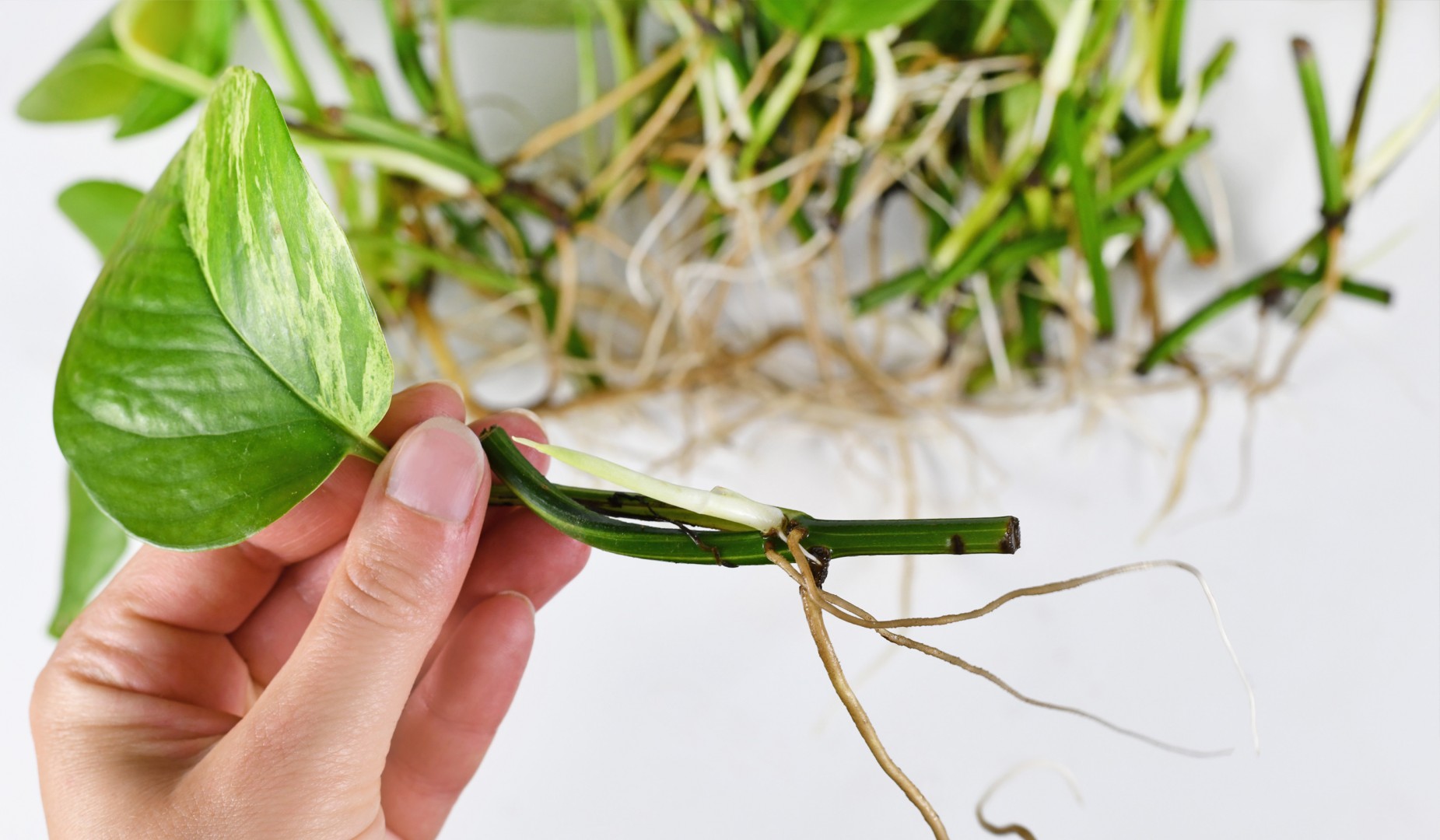
On a healthy vine or stem, look for a tiny brown root node. These tiny root nodes (bumps) are key to propagating plants such as Pothos.
Using a clean, sterile cutting device - Snip off a few inches of the healthy stem right before the node. Ensure to incorporate one or two nodes on the cutting, as this is the point from which the new roots will emerge.
Step 2: Clean around the roots & nodes
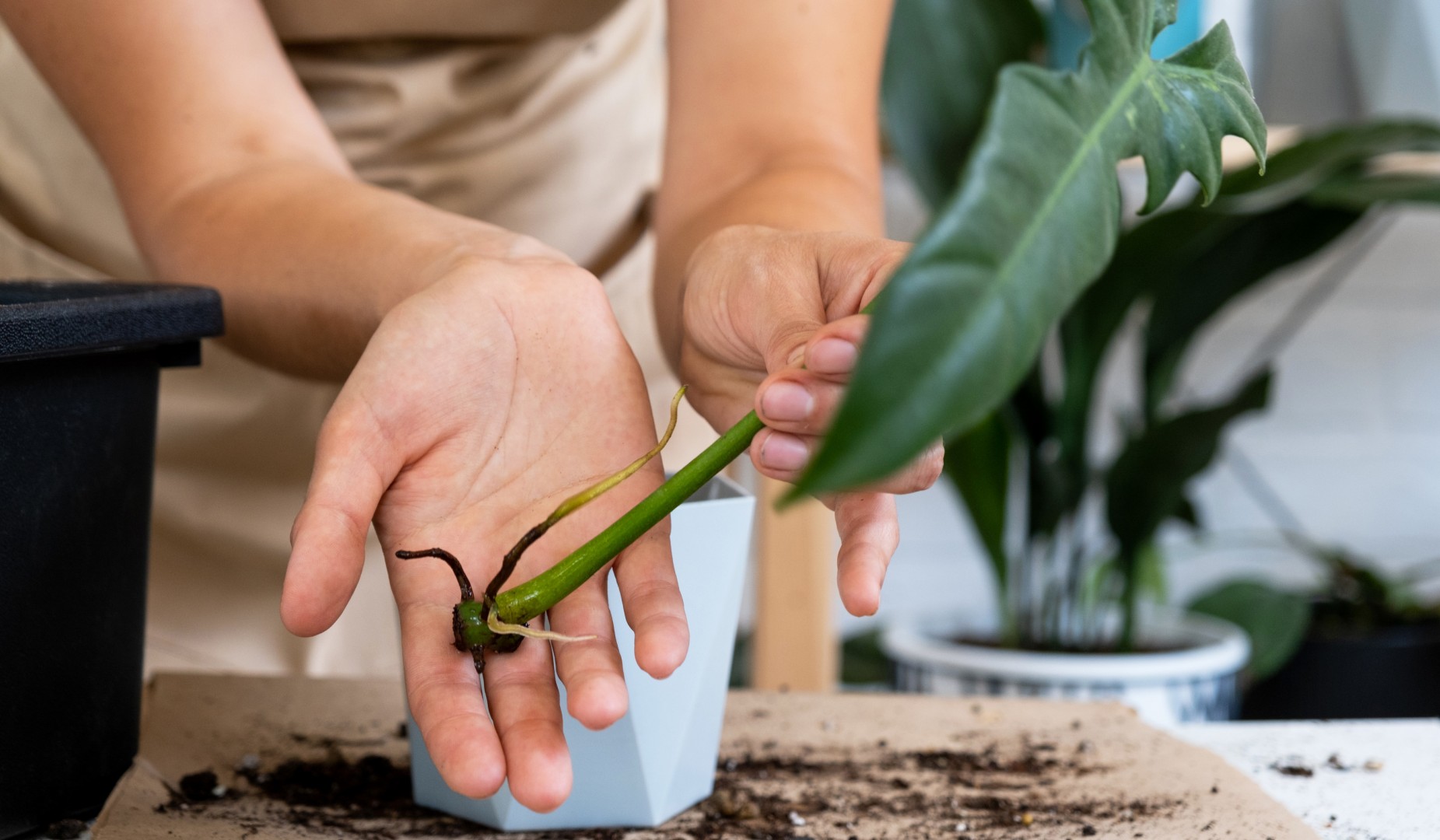
Ensure to eliminate any leaves that are near the node, any leaves near the node or those that could potentially be submerged in water when you place your cutting in your glass jar. These should be removed prior to immersing your cutting in water.
Step 3: Ready the Glass Jar or Container for Fresh Cuttings

Position your fresh plant cutting(s) in your glass jar filled with water and situate it in a location that gets bright, indirect sunlight. Do not place in bright, direct sunlight, or anywhere that receives no light
Step 4: Keep an eye on your plant cuttings
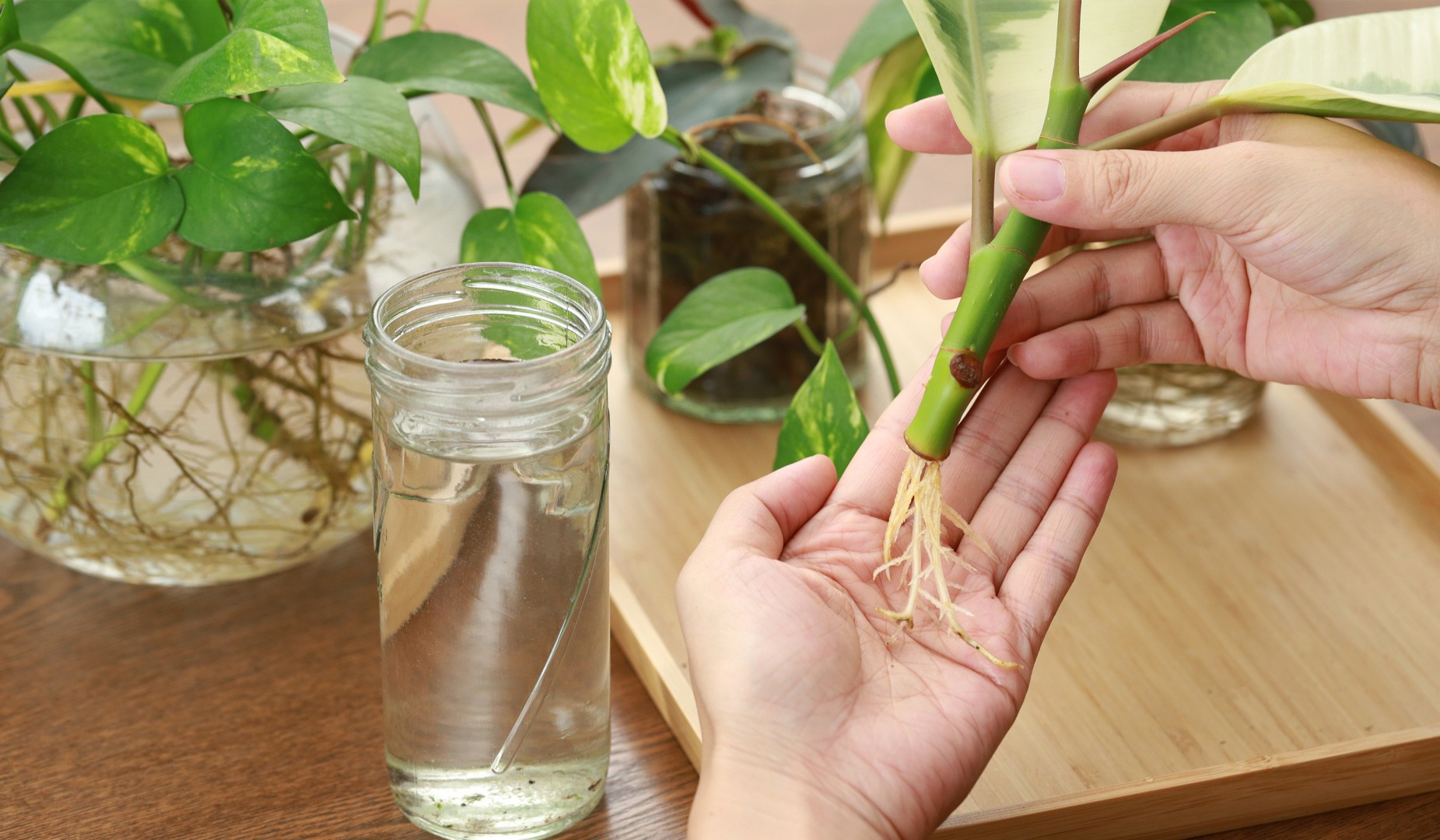
Patience is essential: keep an eye on the plant's root system weekly. Make sure the water is fresh and tepid, and you can either change it out every few days or just add more when it's running low. However, if the water is murky, it's best to completely replace it to ensure the roots stay healthy.
Planting Time
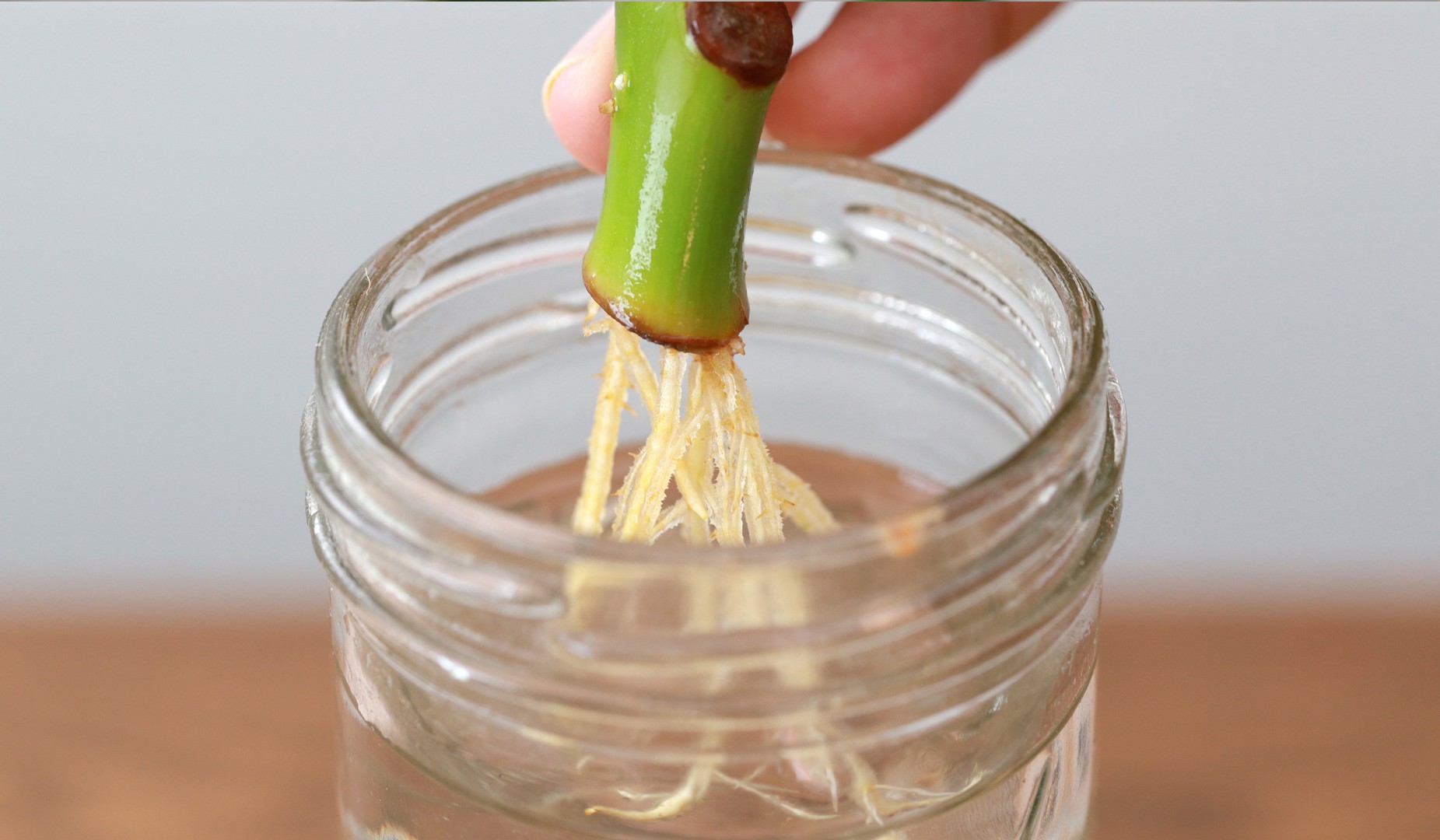
If you want to move the cuttings from their glass jar to the soil, wait until the roots are an inch or more in length. This usually takes four to six weeks. When you put the cutting in the soil, be sure to thoroughly moisten the potting mix with lukewarm water, and put it in a bright area with indirect light. Let the soil dry out in between watering's.
It is possible to keep your clippings growing in water for a long time, however, there is a risk that the plant may not do as well over time due to the lack of nutrients in the water.
To help protect the plant, it is recommended to change the water periodically and add a small amount of fertilizer during the warmer months.
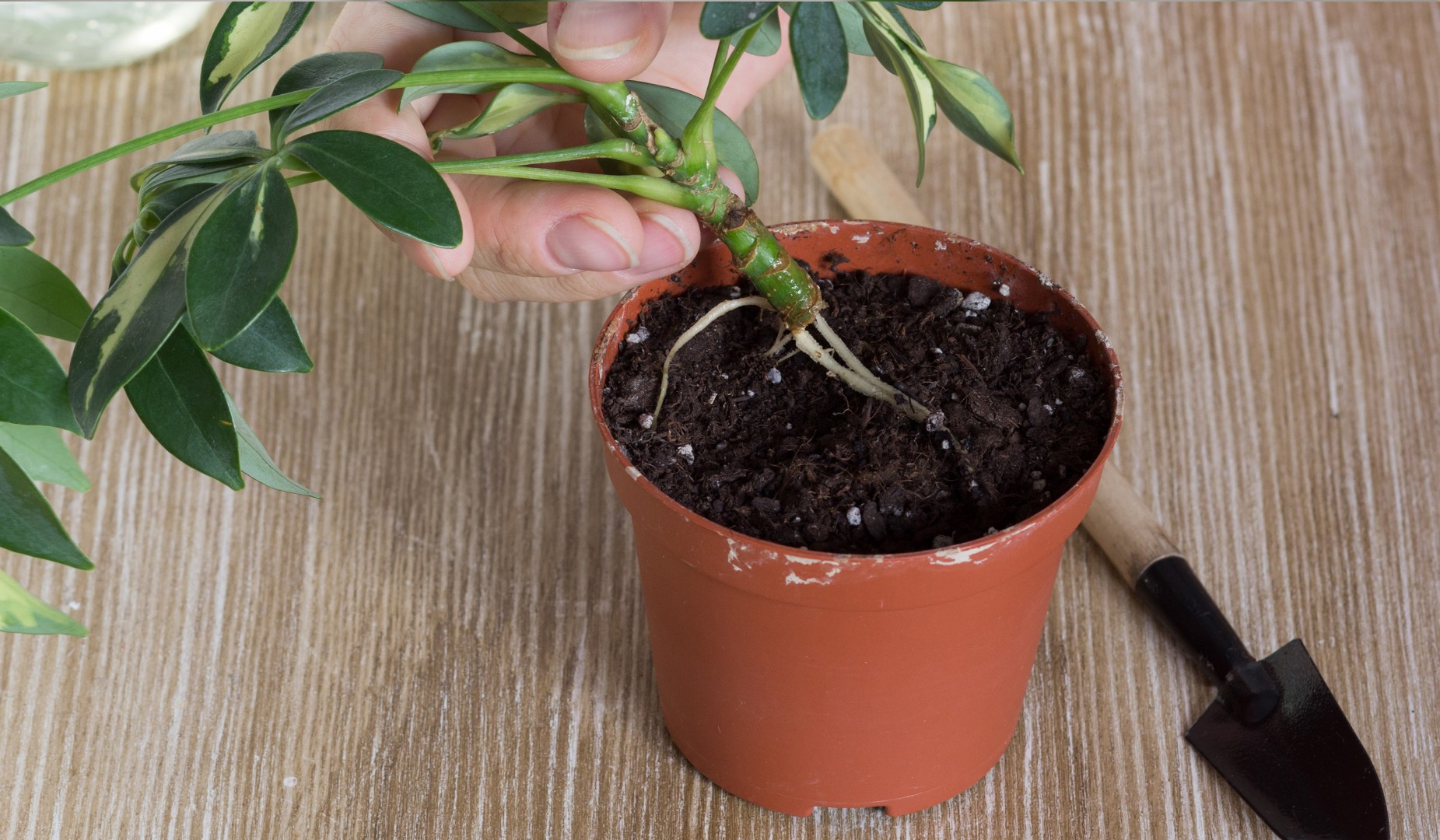
Plants that can be propagated thru leaf cuttings: Pothos, Transcantia, Umbrella plant, Philodendron & Prayer plants.
Step 1: Cut a leaf into sections with angled cuts at the bottom of its cutting.
Step 2: Proceed by immersing the lower end of your cutting in rooting powder, then position it in damp potting soil, and wait patiently. It's as simple as that!
3. Method of Rhizome Division
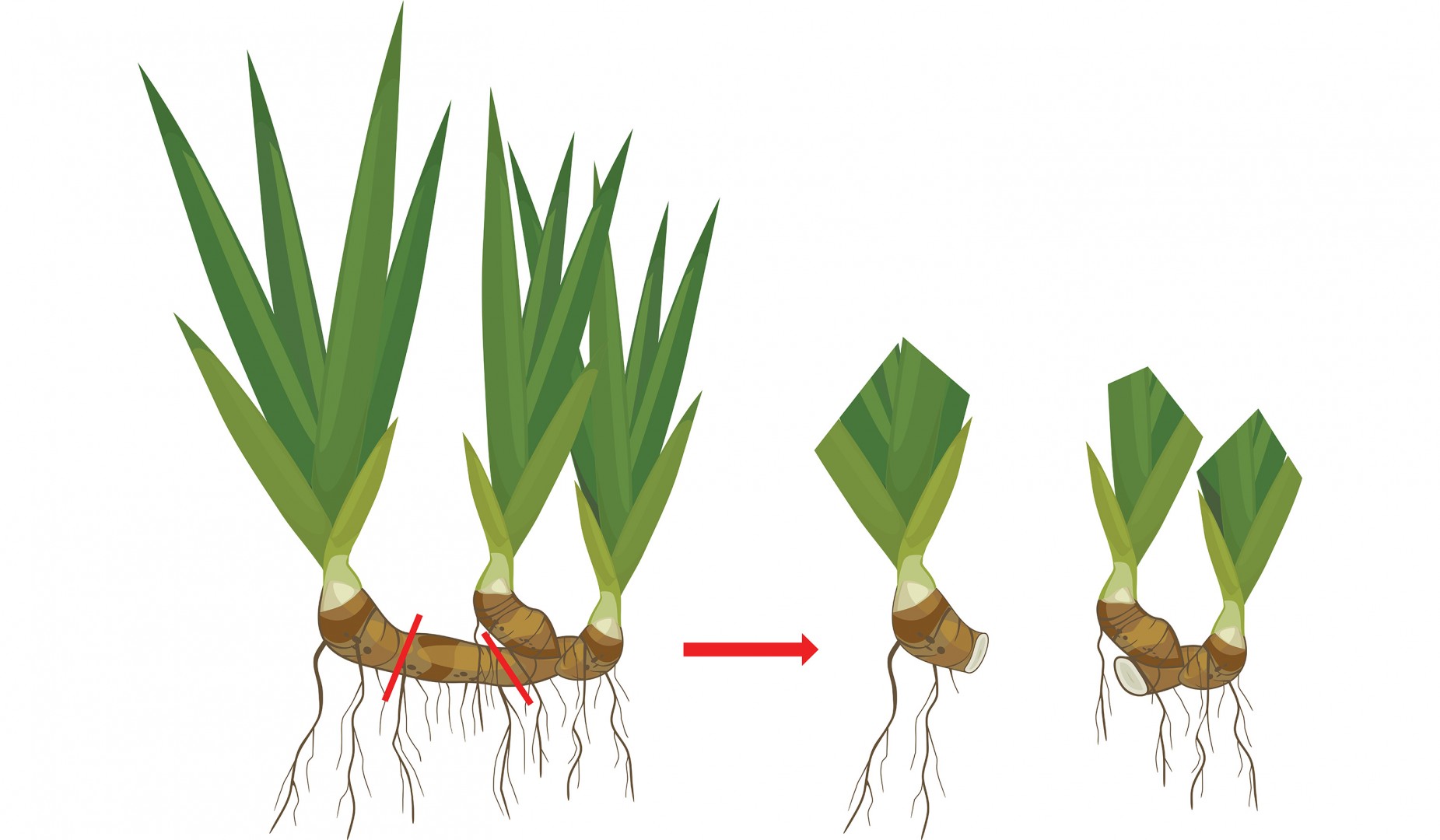
Take the plant out of its pot and try to divide it by pulling gently with both hands. If this method doesn't work, use a knife to cut the plant in two.
Ensure that each section retains some roots, stems, and leaves. Put the plants into fresh, moist soil and make sure they are in a spot with indirect light. Check back in a couple of weeks to see how they are doing.
4. Stem Cuttings Method- Planting directly into Soil
This process works for most multi-stemmed houseplants.
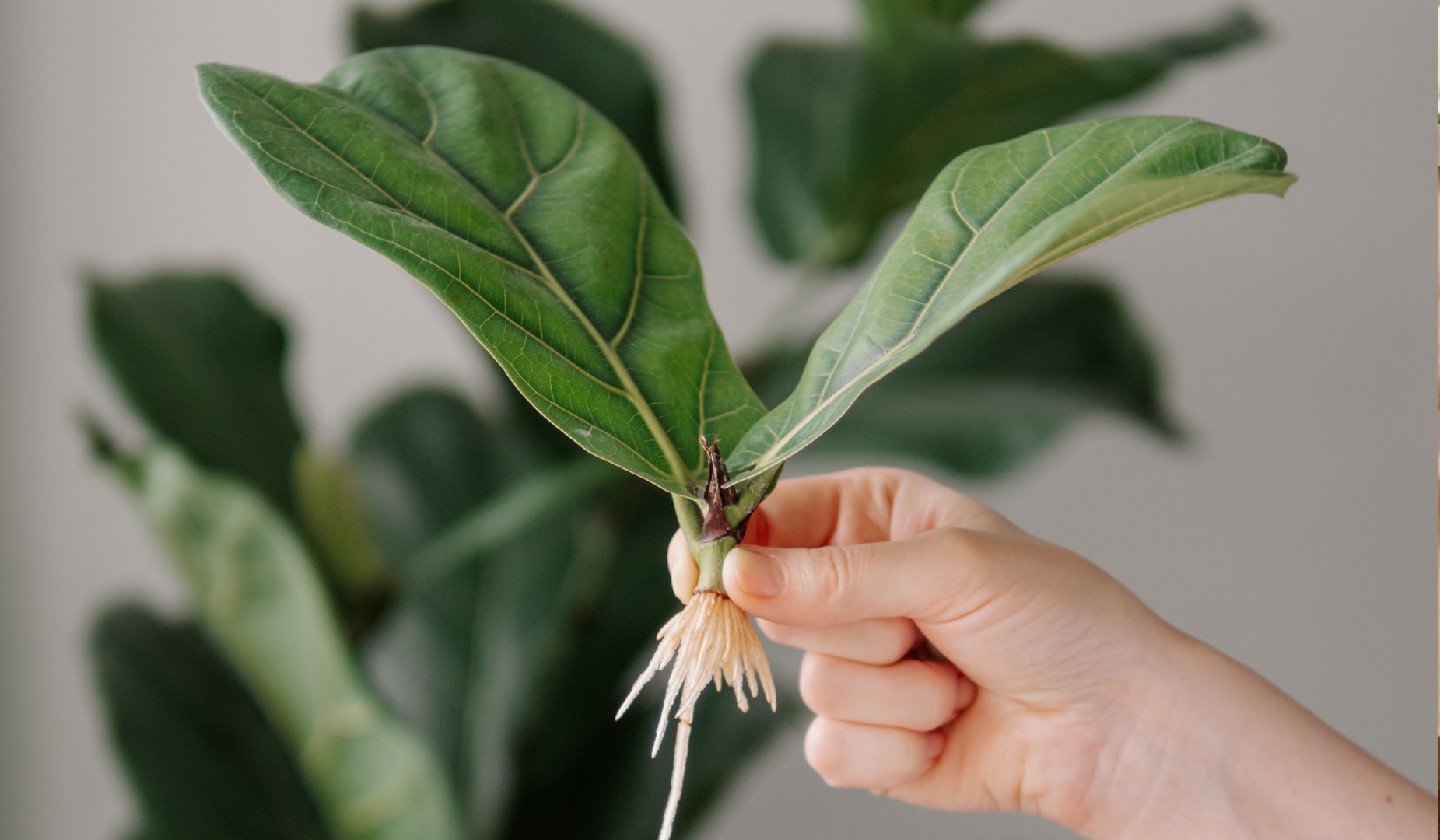
Process:
Cut off 3 -5 inches from the plant's node (see image below)
Next, remove the bottom leaves gently and coat the cut end with rooting hormone.
Utilize your finger or a sharp tool to create a hole in the potting soil at the location where you want to insert your fresh cutting.
If your stem isn't able to hold up on it own - you can prop it up with some extra soil, small rocks, or a wooden stake or pick.
Place your new cutting in indirect light and keep it moist.
You can also add a bag or dome to help increase the humidity and promote strong root growth.
You can confirm that your cutting has taken root when you lightly pull on the stem and sense some pushback. Now you can carefully dig up your cutting with its new root system and replant into fresh potting soil and allow it to Get Growing!